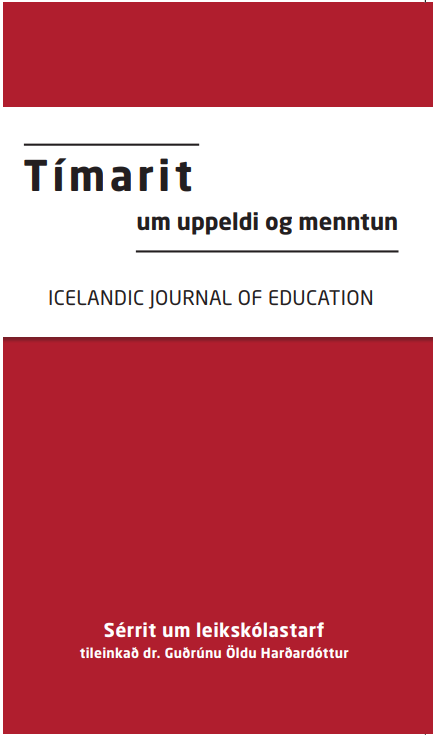Lack of space in preschools
DOI:
https://doi.org/10.24270/tuuom.2024.33.7Keywords:
preschool, space, congestion, powerlessnessAbstract
For years, there have been preschool professionals who have worried about conditions in the preschools, not least how little space there is for the children to play. This led the first author of the article to study what space there actually is in the preschool departments. Results were published in the thesis The Children in the Walls: On Children’s Space in Preschools in 2022. Thirty-eight preschool departments in 30 preschools in the capital city area were measured, and ten department heads were interviewed. The article reports and reinterprets selected parts of the overall study. First, the authors outline the development of official regulations as regards the space meant for children in preschools. These regulations have changed since the first preschool legislation took effect in 1974. In 1994, preschools were included in the school system. Since 2009, there have been no state-stipulated rules in place regarding space per child. After the space regulations were repealed, it was not clear which space criteria individual municipalities used. Second, the measurements made are reported. These measurements strongly indicate very small space per child; less than 2 square meters of floor space, after subtracting from the overall figure, the margin for fixtures and other equipment and the adults working with the children, but increasing to 2.4 square meters when the adults were not taken into account. The similarities between departments were remarkable because the range in the measurements was small; the median was 2.32 square meters, and the standard deviation was only 0.48. Also, when rules for the 18 most populated municipalities are observed, their spatial regulations are similar enough to conclude that the conditions shown in the measurements of the 38 departments are typical for preschool departments across the country. Third, the ten heads of department who were interviewed, talked about how space is used and how the environment impacts their working conditions. First of all, we noted that the spaces in the particular ten departments were divergent; for instance, in eight cases, the departments were in three different spaces. Additionally, the departments had access to a variety of other spaces for a certain period of the day or the week to divide the children’s group. This diversity of space and the division of the children may positively impact the lack of space in the departments. However, the children spent most of the day, or from 50 to 80% of the school day, during the main part of the year, in the narrow space allotted to each department. The department heads were not satisfied with authorities who they experienced as being far away from them. They also felt that methods developed to add more children were unsatisfactory. Those attitudes of the department heads were supported in a 2021 report from the Teachers’ Union, which reported that the preschool principals felt they could not determine the number of children in their schools. It is interesting to consider whether preschool, originally founded by women when they were less influential in society, still remains deprived of authority as regards the women who work there, in spite of various gender equality developments in many spheres of society. The article concludes by stating that the space allotted to children in Icelandic preschools was too small by all measures and that department heads found themselves lacking authority over the situation. The authors argue that it is vital to change the conditions for preschool children; having fewer children in each department would create more space and better conditions for the children and the staff. The authors also suggest that it is high time that the state allocate sufficient tax money to support preschool education.
Downloads
Published
Issue
Section
License
Copyright (c) 2024 Hörður Svavarsson, Ingólfur Ásgeir Jóhannesson

This work is licensed under a Creative Commons Attribution 4.0 International License.

This work is licensed under a Creative Commons Attribution 4.0 International License.
